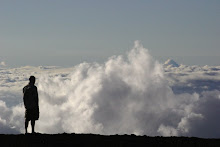
The driver dropped me at Dubai’s Sheik Rashid Terminal, for my Qatar Airways flight to Doha. In total, passengers went through two security checks, once before check-in, and then another before proceeding to the departure gates. Security was fast and efficient, unlike the chaos that seems to ensue at some U.S. airports.
Despite having about five counters open for economy class passengers, check-in took about 20 minutes, which was the longest it has taken me during this trip. Despite flying economy class for this project, Qatar Airways provided me with me a pass to visit their business class lounge.
After completing immigration control, a considerable walk to the departure gates waits passengers, although we were helped with several moving walk-ways. It was the same process on arrival. Once at the departure gates, Dubai Duty Free takes over with a massive shopping experience—a t-shirt for my son, Jack, and a slab of chocolate, measuring 4 ft. x 6 ft. for my work colleagues.
I arrived at the gate about 10:30 am, an hour before our flight, and soon after boarding commenced. Once the stragglers boarded, the economy class cabin of the Airbus 330-300 was nearly full.
I had asked for a window seat, and unfortunately was seated in the bulkhead row. Not a fault of Qatar Airways, but I’m not fond of bulkhead seats, because of the limited leg room. The aircraft was relatively new and the seats were a pleasing maroon colour. Economy class seats were equipped with leg rests.
Before take-off a glass of water and candy was offered, something that few airlines do for economy class passengers. Score one for Qatar Airways. Our 11:30 scheduled departure came and went, with no reason given from the flight deck or cabin crew. The air bridge had been pulled away from the aircraft, so presumably we were waiting for some baggage/cargo to be loaded. It would have been nice if an announcement was made. With the outside temperature a sizzling 42 degrees (107 Fahrenheit), the inside of the aircraft was getting quite warm, while we waited at the gate.
A little more than 15 minutes late, we pushed back from gate 25. A short taxi took us to runway 30R, where we waited for three aircraft to land before lining up for our take-off roll.
Once airborne, the city was visible from the left side of the aircraft, and we passed over Dubai’s new mega development, The World, and in the distance, I saw the iconic Burj Al Arab and Palm Jumeirah through the hazy sky.
Dubai to Doha is a straight 238 mile, 43 minute hop across the Persian Gulf. The sign of a good airline is often how passengers are cared for on a short flight. It’s one thing to pamper passengers on a long haul flight, but yet another on a short flight. In the case of my 45 minute flight a few days ago from Kuala Lumpur to Singapore, Malaysia Airlines fell short of their 5-star distinction, as the service was surprisingly average. Sure, the flight attendants were friendly, but the only thing on offer was a glass of juice. There was not even a snack on offer considering the 8:00 am departure. Qatar Airways by contrast, not only offered water before take-off, but once in the air, we were offered a pre-packed sandwich of sorts that was surprisingly spicy and tasty, juice, and a cookie.
As we neared Doha, we banked over the new part of the city, which is experiencing rapid development, and lined up for an approach to runway 16. As we neared the airport, the pilot increased engine thrust and we started climbing. Excellent, I thought, my first go- around experience. The passengers seated next to me felt a little uneasy about this, but soon the Captain announced that we were coming in too high and too fast, and in the interested of safety decided to abort the landing. We banked out over the ocean, made another pass of the city, and then turned again toward the airport for a safe landing.
Doha airport, which in the next year or so will be replaced by a new, larger facility, has no air bridges. Passengers walk off the aircraft using the stairs and then are bused to the terminal. Economy class passengers exit via the rear of the aircraft, while first and business class at the front. There are two terminals at Doha, one exclusively for first and business class passengers (and visiting journalists traveling around the world), and the other for economy passengers.
Qatar Airways had arranged for the Al Maha meet and greet service, which is available to all passengers for a nominal fee. While a Qatar Airways representative attends to your passport and immigration needs, you can rest comfortably in a lounge with newspapers, magazines, and refreshments. First class passengers are also met, as I was, at the aircraft with a BMW and chauffeur. So this is what it is like to be the Emir, I thought, as I climbed into the car for the short drive to the terminal.
A representative also waited at the luggage carousel for my bag. Although sitting nearby felt oddly uncomfortable, as someone was picking up my luggage. Maybe first class passengers are accustomed to such service. Anyway, I told the representative that my bag was tan in colour, like the sand outside. I hated to watch him check every bag that came along.
Tomorrow I will experience Qatar Airway’s long-haul service with a flight to New York (Newark).



























